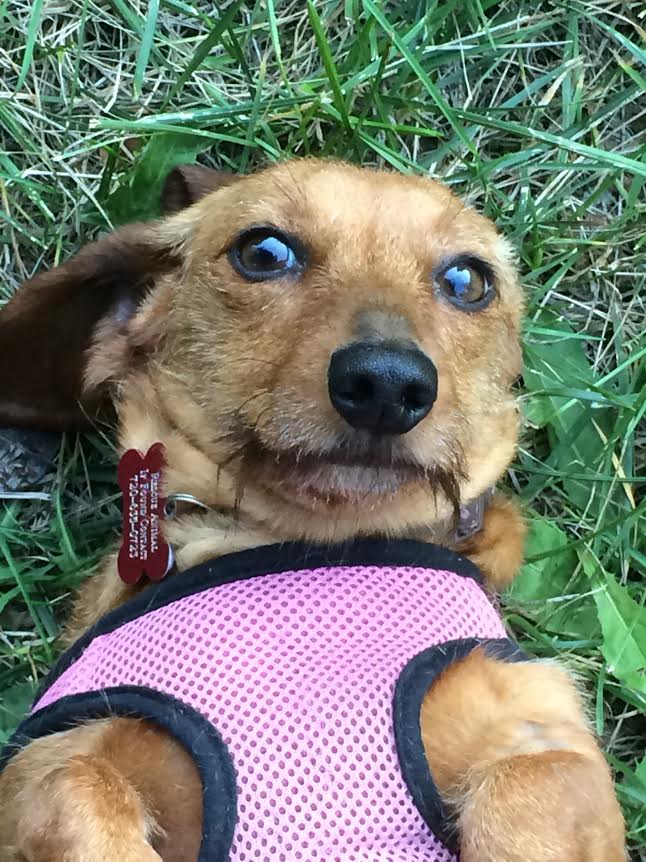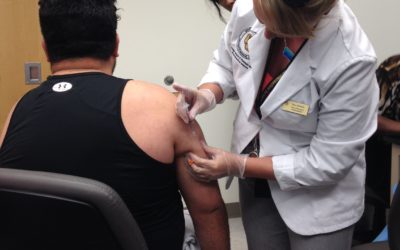Training Your Dog and Understanding Your Immune System
I often find myself bragging that Roo-Roo, my wife’s dachshund, is the most difficult dog in the world to train. We had to work with this dog to teach her to lick gravy off a plate; and it took several tries. I threatened to return the Rooster to the doxie rescue league for not being a real dog if she did not know what to do with bacon, but after some consideration the dog knew what was expected. There are other simple dog behaviors that Roo-Roo might someday achieve, like returning a thrown toy, but only after extensive training.

Training Your Immune System!
Immune systems and dogs have some similarities. Both respond naturally in some ways and in other ways only with training.
It has always surprised me that dogs seem to naturally identify and respond to mail carriers; maybe it’s the bag they carry. Burglars might come in and out of our house without a sound from our dog, but the mailman always gets the agitated barking. Dogs naturally protect us from receiving mail.
Our innate immune systems naturally recognize microorganisms that threaten us. Innate immunity recognizes certain molecular patterns that are present on microbes but never on our own cells. Just as dogs react to bacon, these molecular patterns, such as (1-3)-ß-D-glucan, can stimulate the immune system to immediately attack infections. The innate immune system provides a response that naturally protects during the first days of an infection.
Most dogs can be taught to do something besides bark at the mailman. My grand-dog Catcher (http://silversmithfarm.com/catcher.htm) is a champion weimaraner trained to do all sorts of hunting maneuvers. She is a smart dog. Catcher is always off to one training venture or another, sometimes working intensely and sometimes just having her skills reinforced as she returns an object thrown into a pond.
The immune system can be trained to respond to many microorganisms; this is called adaptive immunity.
Without intervention from antibiotics, infections often tend to last a couple of weeks; this is the time it takes to train the immune system to recognize a new infection and mobilize sufficient antibodies to defeat it. Infections are one way to develop antibodies and immunity; the other way is vaccination. Each vaccine contains cellular material from an infectious microbe that is either dead or weakened to where it will not cause significant disease. Administering a vaccine teaches your immune system just like you send your dog to training school to learn a new trick. After exposure to a vaccine, the body can respond more quickly to infection. And it’s a lot easier on your health to achieve immunity by vaccination rather than through disease.
Some tricks are harder to learn and some dogs are just don’t get it. Many vaccines have to be given multiple times or in stronger doses for some patients. It’s not uncommon for vaccinations to be given in series of three shots, or for booster shots to be given every so many years; each shot reminds the immune system of what it’s learning to recognize and strengthens its response. In those with weakened immune systems, which might include transplant patients, those with HIV, or the elderly, vaccinations may have to be stronger. The flu shot comes in an “extra strong” version for immunocompromised patients and those older than 65.
 So your dog can help you remember that you can also keep your immune system trained and ready to respond.
So your dog can help you remember that you can also keep your immune system trained and ready to respond.
Good nutrition helps your innate immune system and vaccination trains your adaptive immune system.
Your community pharmacist will be happy to talk with you about vaccinations and about your medicines. She or he might even swap dog stories with you. Take good care of yourself and your dog.
Resources:
http://www.health.harvard.edu/staying-healthy/how-to-boost-your-immune-system
https://www.niaid.nih.gov/research/immune-system-overview
http://www.cdc.gov/bam/diseases/immune/immunesys.html
http://kidshealth.org/parent/general/body_basics/immune.html











